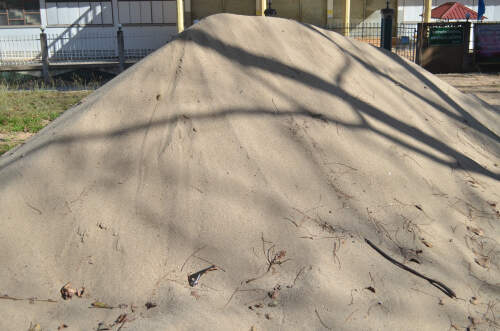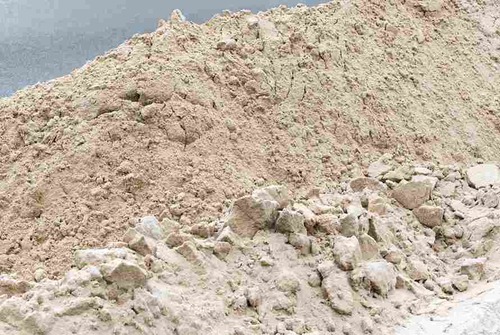Sand

a loose granular substance, typically pale yellowish brown, resulting from the erosion of siliceous and other rocks and forming a major constituent of beaches, river beds, the seabed, and deserts.
TYPES OF SAND :
1.River Sand
River sand is a naturally occurring type of sand sourced from riverbeds. What distinguishes it is its smooth, rounded particles, which make it highly workable. Due to its workability, river sand is a type of sand used in construction tasks that require precision and attention to detail, such as bricklaying, plastering, and concrete mixing. Its rounded particles make it easy to mix and place accurately, making it a popular choice for projects demanding precision.
2. Concrete Sand
Concrete sand is a type of sand specially manufactured for use in concrete mixtures. It is known for its coarse texture, achieved through careful processing that removes impurities. Concrete sand is ideal for creating strong and durable concrete structures like foundations, driveways, and sidewalks. Its coarse texture facilitates good drainage within concrete mixes, contributing to the overall stability and strength of the resulting structures, making it particularly suitable for load-bearing applications.
3. Pit Sand (Coarse Sand)
Pit sand, also referred to as coarse sand, is sourced from natural deposits. This type of sand has a gritty texture, setting it apart from the smoother river sand. It finds application in various construction tasks, including surface leveling, as a bedding material for pavement stones, and as a base for laying pipes and utilities. While not recommended for concrete work due to its relatively high silt and clay content, pit sand is versatile for a range of other construction applications.
4. M-sand (Manufactured Sand)
M-sand, or manufactured sand, is produced through the crushing of hard rocks, resulting in a consistent particle size. It closely resembles natural river sand and is esteemed for its high quality. M-sand is widely used in construction for concrete production, plastering, and general construction where high-quality sand is imperative. It offers the advantage of consistent particle size and quality, making it a reliable alternative to river sand in construction.
Also Read: M Sand Vs River Sand
5. Utility Sand
Utility sand, sometimes known as fill sand or backfill sand, is distinguished by its coarse texture, which enables easy compaction. It primarily serves the purpose of filling voids or trenches in construction projects, such as landscaping, pipe bedding, and filling large excavated areas. Utility sand's ease of compaction and ability to create a stable base make it indispensable for achieving a solid foundation in various construction activities.
6. Fill Sand
Fill sand shares characteristics with utility sand, notably its coarse texture and good drainage capabilities. It is employed for filling large voids or areas that require substantial filling, such as building foundations and road construction. Fill sand is compacted to establish a stable base, making it essential for projects demanding a robust foundation.





